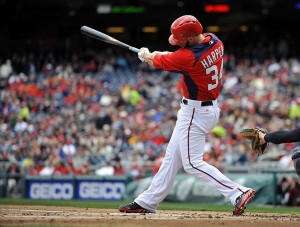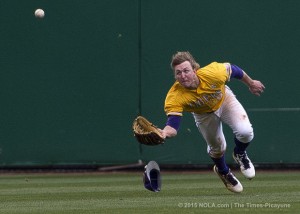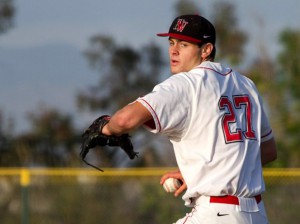One bit of analysis that we end up doing every year on the franchise, when thinking about potential moves and roster construction, is Options analysis. I’m posting this now b/c a couple of the guys w/o options are tender candidates, so this may play into the team’s decision on whether to keep them for 2016.
On the odd chance that you don’t know what i’m talking about with Options, here’s some quickie links that help explain the rules: Wikipedia’s baseball transactions, but more importantly an old Keith Law article on the baseballanalysts.com website explains the nuances of optional assignments well. Basically it goes like this: once you’re put onto the 40-man roster, if you’re not also on the 25-man (or “active”) roster then you are playing in the minors somewhere .. and you are called being on “optional assignment” down there. In order to protect the hoarding of players, teams can only send 40-man players down to the minors three years before being forced to allow other teams to lay claim to them and put them on their own active rosters. Each year you are sent down to play in the minors is called an “Option” or an “option year.”
I’ve done this analysis before: here was 2015’s analysis (where 4 of the 6 out of options guys were gone before opening day) and here was 2014’s analysis noting that Corey Brown and especially Ross Detwiler were going to be problematic; Brown was DFA’d and traded shortly there after while Detwiler stuck around for a whole season prior to getting moved to Texas.
Here’s the current Nats 40-man roster with updated Service times for 2015 as well as a review of Option Status for the 2016 year. There are a couple guys who seem to have some options limitations going into 2016 that we’ll have to keep an eye on.
First up; Vets who can refuse demotion thanks to having 5 or more years of service time. The Nats have ten (10) such players on the current 40-man roster:
| Player | Service Time post 2015 | First Added to 40-man | Notes |
| Werth, Jayson | 12.102 | Nov 2002 | achieved 10&5 rights in 2015, not that he needed it |
| Papelbon, Jonathan | 10.064 | July 2005 | never optioned as far as I can tell |
| Zimmerman, Ryan | 10.032 | Sep 2005 | never used an option; achieved 10&5 rights in 2015 |
| Escobar, Yunel | 8.121 | June 2007 | Doesn’t look like he was ever optioned after 6/2007 callup |
| Scherzer, Max | 7.079 | May 2007 | |
| Gonzalez, Gio | 6.162 | Aug 2008 | |
| Stammen, Craig | 5.160 | May 2009 | Less than 20 days in minors in 2010, so no option used |
| Storen, Drew | 5.140 | May 2010 | 2013 option cancelled when recalled before 20 days were up. |
| Strasburg, Stephen | 5.118 | Aug 2009 | Probably eligible for a 4th based on lack of service time. |
| Ramos, Wilson | 5.047 | Nov 2008 |
Four players achieved the all-important 5th service year in 2015: Stammen, Storen, Strasburg and Ramos. It wasn’t exactly likely that any of these four were in jeopardy of getting optioned (all four still had options available), but now they definitely cannot be sent down (as Storen was briefly in 2013).
Two guys achieved the “Ten and Five” rights in 2015: Werth and Zimmerman. 10&5 gives automatic trade protection to the player … but both Werth and Zimmerman have full no-trade clauses anyway, so the 10&5 doesn’t mean much.
Next group: Options Available but are MLB entrenched. Six (6) guys are in this category in my opinion:
| Player | Service Time post 2015 | First Added to 40-man | Option Years Used | Options left? | Notes |
| Espinosa, Danny | 4.113 | Sep 2010 | 2013 | 2 | |
| Harper, Bryce | 3.159 | Aug 2010 | 2011, 2012 | 1 | Did 2010 count as an option year? |
| Rendon, Anthony | 2.130 | Aug 2011 | 2012, 2013 | 1 | Probably eligible for a 4th option eventually if needed |
| Roark, Tanner | 2.055 | Aug 2013 | 3 | Optioned on 8/25/15 but then called up 9/4 cancelling the option | |
| Barrett, Aaron | 1.144 | Nov 2013 | 2014 | 2 | |
| Ross, Joe | 0.094 | June 2015 | 2015 | 2 |
In my mind, none of these guys are really candidates to get optioned in 2016 despite having options available to them. Roark was optioned in late 2015 (August 25th) but then got called right back up on Sept 4th, so (if i’m reading the rules correctly) that option was “cancelled” for being too short.
I have an open question about Harper‘s 2010 option status; does it count as an option year if you sign a major league contract and then get assigned to a minor league team in the same year? Not that it really matters for Harper (it isn’t like the reigning NL MVP is in danger of getting optioned), and it can no longer happen (MLB contracts were banned in the latest CBA), but its an intellectual issue. If you have an opinion or insight, please feel free to chime in. I’m guessing the rules at the time stated that you cannot burn an option the same year you signed, so i’ve not included it as an option year for Harper here.
Next group: Options Available and thus jeopardizing 25-man roster status for 2016: Five (5) players in this category:
| Player | Service Time post 2015 | First Added to 40-man | Option Years Used | Options left? | Notes |
| den Dekker, Matt | 1.033 | Aug 2013 | 2014, 2015 | 1 | |
| Taylor, Michael | 1.037 | Nov 2013 | 2014 | 2 | |
| Treinen, Blake | 1.065 | Apr 2014 | 2014 | 2 | |
| Solis, Sammy | 0.097 | Nov 2013 | 2014, 2015 | 1 | |
| Turner, Trea | 0.045 | Aug 2015 | 3 | still pissed he was called up so early. |
If the season started tomorrow, I’d likely project all five of these guys to be on the 25-man roster, three of them in pretty prominent roles. den Dekker definitely seems like a guy who may get squeezed to the minors, especially if the team acquires a veteran OF this off-season.
If you want to read more of my rants on Turner‘s call-up, you can certainly find them in the comments sections over the past few months. In fact, here’s my complaint the day they called him up in this space. 45 days of service time blown so he could collect MLB meal money for a month’s worth of pinch hitting and pinch running appearances while the team flushed away its season. He started the last 6 games of the season, having only gotten two spot starts in the previous 5 weeks, in an idiotic use of his time for a team that didn’t need or use him down the stretch. By my calculations, in order to “save” another year of his time, he’d have to start in Syracuse and stay down there for *8 weeks*; 6 weeks to make up for the 45 days of service time and then another two weeks to make sure that the team saves the difference between a full service time year (172 days) and the number of actual days in a MLB season (roughly 183 days). See that happening? I don’t either. So its a moot point and we have lost any shot of extending his stay here an extra year.
Next, the large group of guys for whom Options almost guaranteed to be used in 2016. Thirteen (13) in total:
| Player | Service Time post 2015 | First Added to 40-man | Option Years Used | Options left? | Notes |
| Davis, Erik | 1.045 | Nov 2012 | 2013, 2015 | 1 | 60-day DL 2014; no option burned but earned 1 full year of service time |
| Hill, Taylor | 0.030 | June 2014 | 2014, 2015 | 1 | |
| Jordan, Taylor | 1.047 | June 2013 | 2014, 2015 | 1 | |
| Cole, AJ | 0.047 | Nov 2014 | 2015 | 2 | |
| Grace, Matt | 0.074 | Nov 2014 | 2015 | 2 | |
| Goodwin, Brian | 0.000 | Nov 2014 | 2015 | 2 | |
| Difo, Wilmer | 0.051 | Nov 2014 | 2015 | 2 | |
| de los Santos, Abel | 0.006 | July 2015 | 2015 | 2 | Kind of a waste of an option year; 6 days service time in 2015 |
| Martin, Rafael | 0.048 | Apr 2015 | 2015 | 2 | |
| Severino, Pedro | 0.034 | Sept 2015 | 3 | ||
| Lee, Nicholas | 0.000 | Nov 2015 | 3 | ||
| Kieboom, Spencer | 0.000 | Nov 2015 | 3 | ||
| Bostick, Chris | 0.000 | Nov 2015 | 3 |
The Nats did themselves no favors by letting Davis hang on the active roster all year in 2014, accruing a full year of service time instead of burning an option. Perhaps in the end it won’t matter; despite all the other RH relievers used last year, Davis never got called up and seems closer to an outright than worrying about where to rent in DC for the summer. Speaking of RH relievers, the team called up Abel de los Santos in July, let him play for exactly 6 days, then optioned him back. Davis (if he’s still around) and the two 4-A starters Jordan and Hill probably each burn their final option in 2016 and then force the team’s hand next off-season. But that’s what we’ll talk about in next year’s version of this post.
In the meantime, here’s the meat of this year’s post: The four players on the Nats 40-man roster who have no Options left and thus have to either be on next year’s 25-man roster or be subjected to waivers prior to the season starting.
| Player | Service Time post 2014 | First Added to 40-man | Option Years Used | Options left? | |
| Lobaton, Jose | 4.138 | Nov 2008 | 2010,2011, unk 3rd | 0 | no options per mlbtraderumors; can’t tell if optioned in 2009 or 2012. |
| Moore, Tyler | 3.018 | Nov 2011 | 2012,2013,2014 | 0 | 86 days on mlb roster in 2014; how does this add to 1.106? |
| Robinson, Clint | 1.028 | Nov 2010 | 2011,2012,2013 | 0 | |
| Rivero, Felipe | 0.162 | Nov 2012 | 2013,2014,2015 | 0 | I’m pretty sure 2015 counted as an option year |
Now, both Lobaton and Moore are returnees from last year’s version of this post. Lobaton was always set to be Ramos’ backup and dutifully performed in that role, slashing just .199/.279/.294 in that role. I’m not entirely sure that either of the catchers on the 40-man roster can supplant Lobaton as Ramos’ backup, but I’m also not entirely sure that Lobaton will even be here in 2016 thanks to his performance. So his lack of options may not matter; if the team buys another catcher on the FA market or in trade, Lobaton is likely DFA’d soon thereafter. Moore (as noted in prior posts) has a bigger issue this coming off-season; he’s Arbitration eligible in a season where he was lucky (thanks to a constant barrage of injured players) to have lasted the whole season on the roster. As mentioned in the previous post; both of these guys are also serious non-tender candidates, which would close the book on them with this team regardless.
Lets talk about the more interesting cases. Robinson, from what I can gather from his convoluted Cots contract history page, had three straight options burned after getting added in Nov 2010 by his original signing club Kansas City. After two option years and a scant four PAs in 2012, he was DFA’d and acquired by Pittsburgh, who then DFA’d him themselves at the end of Spring Training 2013. Toronto claimed him, optioned him, then DFA’d and outrighted him a couple months later without ever appearing for their big club. He signed as a MLFA with Los Angeles in 2014, got called up, got 9 ABs and then was DFA’d again (because of course by this time he was out of options…). He played out the string for the Dodgers’ AAA club and then signed with Washington as a MLFA again in 2015. So, all of that leading to his nice 2015 season for us and for 2016 he’s either going to be with us or against us: no options means he either makes the team or possibly moves on.
The other guy of note is Rivero. His first two option years are easy. But his up/down in 2015 may or may not have counted as an optional assignment. Here was his movement this past season:
- 3/16/15: Optioned officially to AAA though the minor league season doesn’t start until 4/9/15.
- 4/16/15. So that’s roughly 10 days in the minors since the Nats season starts on 4/6/15.
- Two days later he got sick and eventually went on the D/L (remember the story? he was throwing up black blood thanks to taking too much Advil)
- 5/21/15: reinstated from the D/L and optioned back to Syracuse
- 6/1/15: recalled again; so he was in Syracuse a grand total of 10 additional days.
So, by my count that’s 20 days in the minors right on the nose. But the rules say that if you spend at least 20 days in the minors, that you’ve burned an option for that year. So this is pretty close; did Rivero use an option for 2015 or not? I think he did. Now, it may not really matter since he really showed some serious cheese for the Nats this year and seems like a lock to be in the 2016 pen, but from an organizational flexibility perspective its nice to have.
So there’s the Options analysis for the team (well, at least the state of the team and its 40-man roster just after the Rule-5 protection additions and prior to any wheeling-and-dealing this coming off-season). No big decisions to be had, but some concern areas for this year and next.
Feel free to comment if you think i’ve gotten anything wrong in the analysis.








